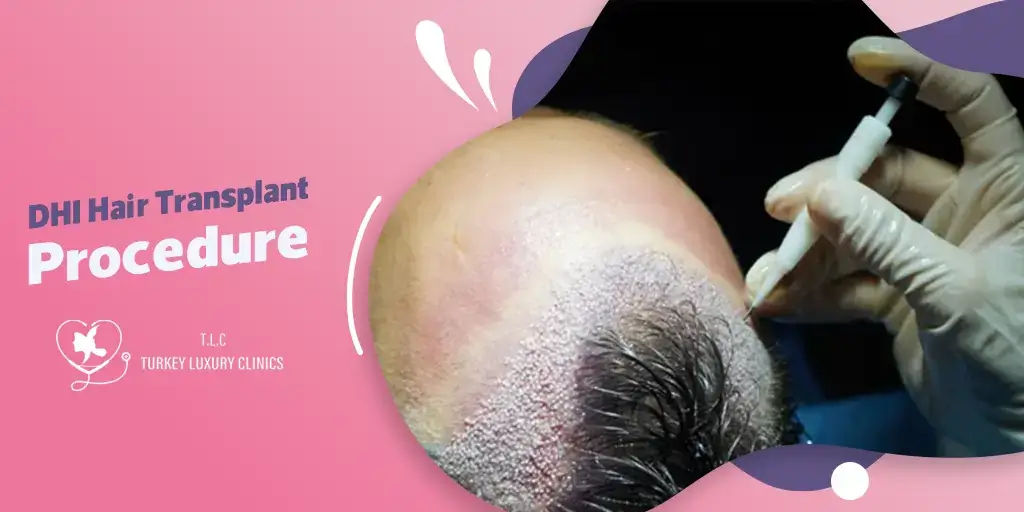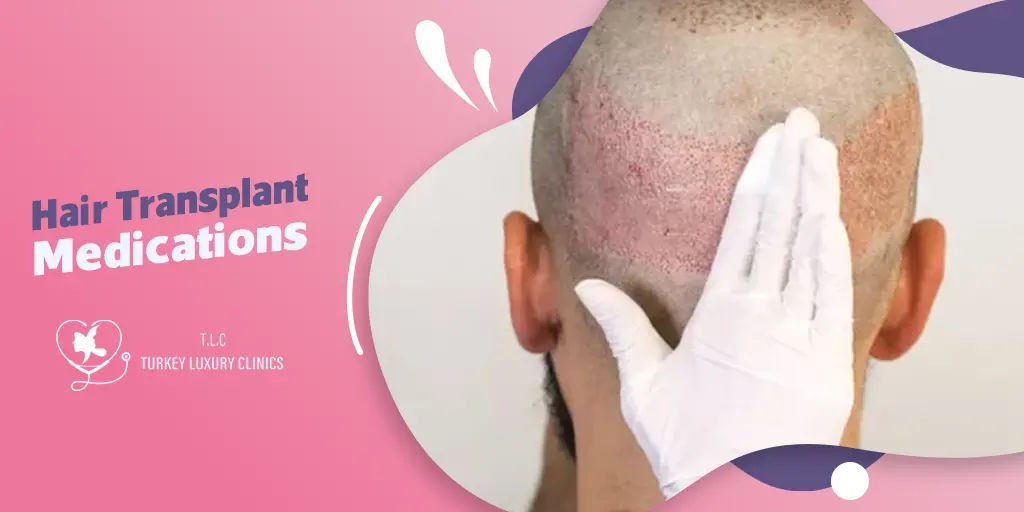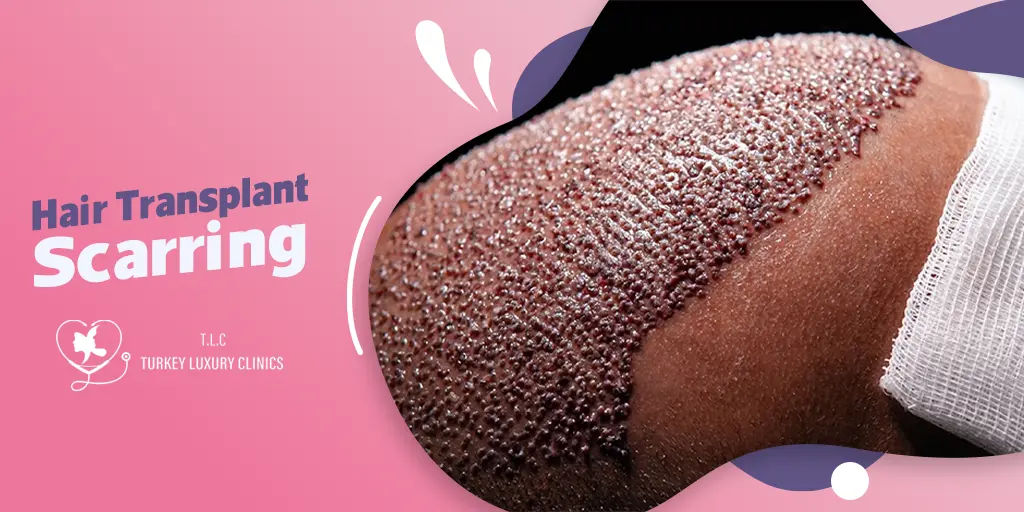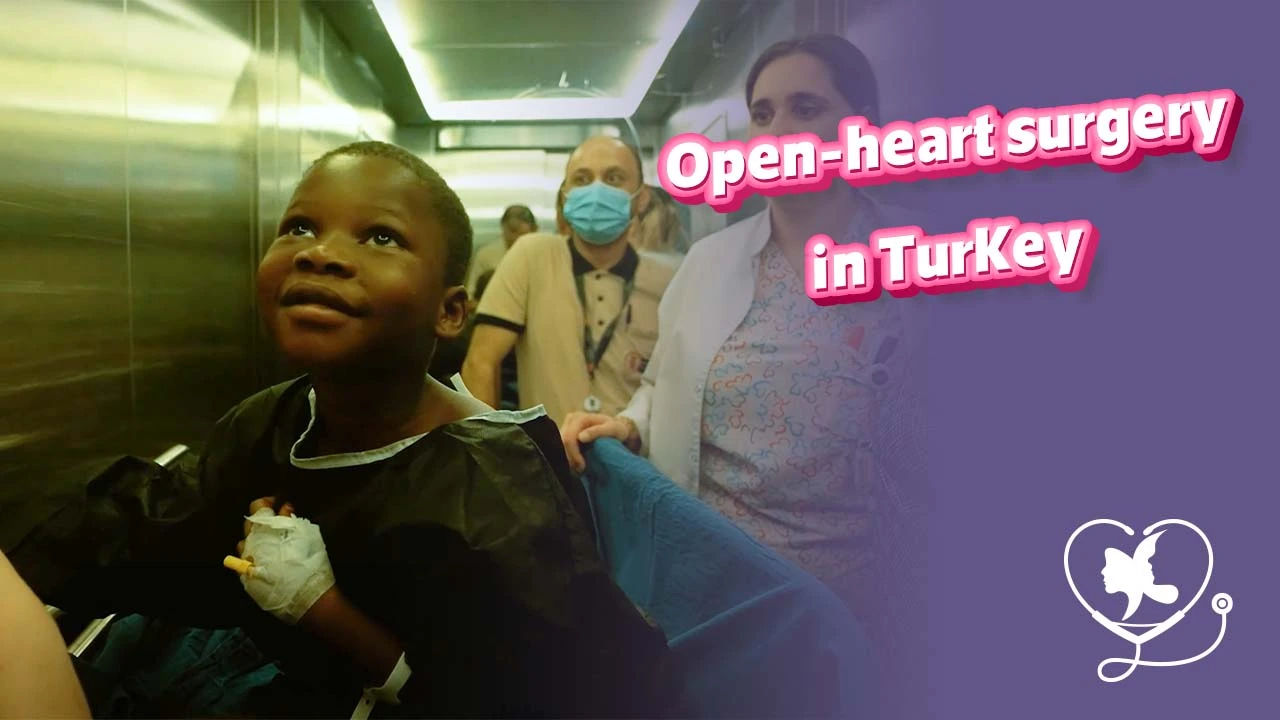- - What is DHI hair transplant?
- - How Much Does DHI Technique Cost in Turkey 2025
- - Why do many patients prefer DHI over Other Hair Transplant methods؟
- - How does DHI Hair Transplant Procedure Work؟
- - What to Expect After DHI Hair Transplant with Photos
- - DHI Hair Transplant Side Effects
- - Get Your DHI Hair Transplant with Confidence at Turkey Luxury Clinics
- - FAQs About DHI Hair Transplant
DHI (Direct Hair Implantation) is one of the most advanced and precise hair restoration methods available today, offering natural-looking results across various types of hair transplants.
In Turkey, leading clinics stay ahead by using the latest techniques and technologies, ensuring maximum effectiveness with minimal side effects. The success rate of DHI hair transplants in Turkey reaches up to 95%, thanks to expert surgeons, modern tools, and personalized care. With costs starting from just $1,800, your journey to fuller, natural hair becomes both affordable and rewarding.
At Turkey Luxury Clinics, we’re your trusted partner every step of the way. From consultation to aftercare, we help you get the most out of your DHI hair transplant—smoothly, safely, and with full transparency.
What is DHI hair transplant?
DHI technique hair transplant (Direct Hair Implantation) is a modern hair transplant technique that builds upon the FUE (Follicular Unit Extraction) method. It involves extracting hair follicles one by one from the donor area and implanting them directly into thinning or bald areas using a specialized tool called the Choi Implanter Pen. This advanced instrument allows surgeons to precisely control the angle, depth, and direction of implantation—leading to higher graft survival rates and a more natural-looking hairline.
What is DHI Choi Implanter Pen?
The Choi implanter pen is a specialized medical device used during DHI (Direct Hair Implantation). It features a fine, hollow needle at the tip, allowing hair follicles to be directly implanted into the scalp.
Each follicle is carefully loaded into the pen, and with one precise motion, the surgeon creates a tiny opening and inserts the follicle at the same time, allowing greater accuracy in hairline design, minimizing incisions, and supporting faster recovery, especially in the hairlines.
How DHI Differs From FUE?
While both DHI and FUE techniques involve extracting hair follicles one by one from the donor area, the main difference lies in how the follicles are implanted.
In the FUE method, the surgeon first needs to shave all the surrounding area in the graft zone, then he creates tiny incisions or channels in the recipient area using fine instruments, such as microblades or needles, and then manually inserts the harvested follicles into those channels.
In contrast, DHI method uses the Choi Implanter Pen to both create the entry point and insert the follicle in a single motion—eliminating the need for pre-made incisions. This reduces trauma to the scalp, shortens recovery time, and allows for more precise control over the angle and placement of each follicle.
How Much Does DHI Technique Cost in Turkey 2025
The cost of DHI hair transplantation in Turkey typically ranges from $3,000 to $8,000. This variation depends mainly on the number of grafts needed, the clinic's reputation, and the experience of the medical team.
Since DHI is the most advanced technique currently available, it's also the most expensive. On average, the cost per graft in DHI is between 3% and 9%, compared to 2% to 5% in FUE techniques.
The total number of grafts required depends on the size of the recipient area, the desired hair transplant density, and the availability of healthy follicles in the donor area.
Cost of DHI technique in Turkey vs. other countries
While the average DHI cost in Turkey ranges from approximately $2,500 to $6,500, prices can reach $12,000 or more in the US and UK, while most European countries typically range between $3,300 and $9,900.
Read more about cost of hair transplant in turkey and the average cost in different countries
Who is Best Qualified for DHI hair transplant?
In general, ideal candidates for any hair transplant should have a stable pattern of hair loss, sufficient healthy donor hair, and realistic expectations.
Specifically, individuals with androgenetic alopecia (male or female pattern baldness), a donor area density of 40+ follicles per cm², and who are over the age of 25 with no major health issues are often considered suitable.
DHI hair transplant is especially recommended for women, patients who prefer not to shave the recipient area, and in cases where precision is critical—such as eyebrow, eyelash, beard, or hairline restoration.
Why do many patients prefer DHI over Other Hair Transplant methods؟
DHI hair transplant offers advantages over other hair transplant techniques such as a more natural appearance due to precise graft placement, no need for incisions or shaving the recipient area, faster recovery, minimal hair transplant scar, and higher graft survival rates facilitated by the Choi implanter pen.
DHI Advantages
- DHI (Direct Hair Implantation) stands out as a minimally invasive method that offers a combination of comfort, precision, and natural results.
- One of the main DHI advantages is the no shaving of the recipient area, making it ideal for those who want to maintain their existing hairstyle.
- Unlike traditional techniques, DHI uses a Choi implanter pen that allows the doctor to control the angle, depth, and direction of each graft — leading to higher follicle survival rates, denser results, and a more natural look, especially for treating small or delicate areas, like the hairline or temples.
- DHI technique hair transplant produces less trauma, and minimal bleeding
- One of the most attractive benefits of DHI hair transplant is that it leaves no visible scarring.
- Faster recovery, with most patients able to return home the same day with noticeably less discomfort and resume work within just a few days.
How does DHI Hair Transplant Procedure Work؟
The surgeon evaluates the hair loss stage and determines the number of grafts, density of hair transplant, and the best donor area.
DHI Hair transplant involves 3 key steps: preparation for the procedure, collection of hair follicles, and insertion of these follicles.
1. Patient Preparation for DHI transplant
This step involves anesthetizing the scalp with local anesthesia to minimize discomfort. The donor and recipient (graft) areas are precisely determined, and hair is shaved only in the donor area—there's no need to shave or trim the surrounding hair in the graft area.
2. Hair Follicle Harvesting in DHI
Using a micro punch tool, the surgeon extracts hair follicles one by one from the donor area, without the need for large incisions.
3. Hair Grafting with Choi pen
The hair follicles are loaded into a Choi implanter pen and directly implanted into the scalp in one step. This allows for precise control over the depth, angle, and direction of each graft, ensuring natural-looking results without prior incisions.
What to Expect After DHI Hair Transplant with Photos
After DHI hair transplant, expect mild side effects, shedding in the first month, and new hair growth starting around month 3. Full results show within 12 months.
DHI Results with photos
After hair transplant by the DHI technique, the results will be a significant, permanent fuller hair with natural appearance that starts to appear fully within 12 to 18 months after the procedure.
Recovery period after DHI hair transplant
In the first week after a DHI hair transplant, patients may experience mild swelling, redness, and discomfort, along with the formation of scabs in the grafted areas.
These scabs typically fall off naturally within a week. It’s important not to scratch or forcibly remove them, as doing so could dislodge the newly implanted follicles.
A normal part of the recovery process is shock loss — the temporary shedding of transplanted hairs — which usually begins in the second or third week and may last up to three months.
This shedding is part of the natural hair growth cycle and does not affect the implanted follicles.
Although results aren’t immediate, the new hair growth follows a predictable timeline for hair growth typically becomes noticeable between 3 to 6 months after the procedure, with full results developing over 12 to 18 months.
Does DHI leave scars?
No, DHI method hair transplant doesn’t leave visible scars. Unlike traditional methods that require incisions or channel opening, the DHI technique uses a Choi pen to directly implant hair follicles into the scalp and avoids cuts and stitches, resulting in a scar-free recovery.
DHI Hair Transplant Side Effects
DHI hair transplants are generally safe, but some temporary side effects can occur during the recovery phase. Common reactions include swelling, redness, itching, and crusting in both the donor and transplanted areas. In rare cases, patients may experience infection, dandruff, prolonged shedding, or pimples, which may require medical attention. Long-term side effects such as visible scarring are uncommon due to the precision of the DHI method.
Here are the most reported DHI hair transplant side effects:
- Itching
- Swelling
- Bleeding
- Pain
- Scar
- Shock loss
- Infection
- Paresthesia
- Crusting
- Folliculitis
- Sudden hair loss
Get Your DHI Hair Transplant with Confidence at Turkey Luxury Clinics
Looking for a fuller, natural-looking result with the precision of DHI? Get your hair transplant done right — with safety, accuracy, and artistry — at Turkey Luxury Clinics. Book your free consultation today and take the first step toward hair you'll truly love.
FAQs About DHI Hair Transplant
What is DHI in hair transplant?
DHI (Direct Hair Implantation) is a hair transplant method where follicles are implanted directly using a Choi pen, offering natural results with no incisions and faster recovery.
Which is better, DHI or FUE?
DHI offers more precision and faster recovery compared to FUE, making it ideal for refined hairlines and minimal scarring. However, FUE may be better for covering large bald areas.
How long does DHI last?
Results from DHI hair transplant are permanent. Transplanted hair typically grows for a lifetime, provided post-care is followed properly.
What are the disadvantages of DHI?
Disadvantages of DHI include higher cost, longer procedure time, and the need for a highly skilled surgeon to avoid poor hairline design or uneven density.
How long does it take to see results from DHI hair transplant?
Initial hair growth appears within 3–4 months, with full results usually visible between 9 to 12 months after the DHI procedure.
What to expect after a DHI hair transplant?
After a DHI transplant, expect mild swelling, redness, crusting, and hair shedding in the first month. Visible growth starts around month 3, improving gradually up to a year.
How long after DHI can I wear a hat?
You can safely wear a loose-fitting hat about 7 to 10 days after a DHI transplant, once the grafts have settled and scabs fall off naturally.












.webp)
.webp)
.webp)
.webp)

